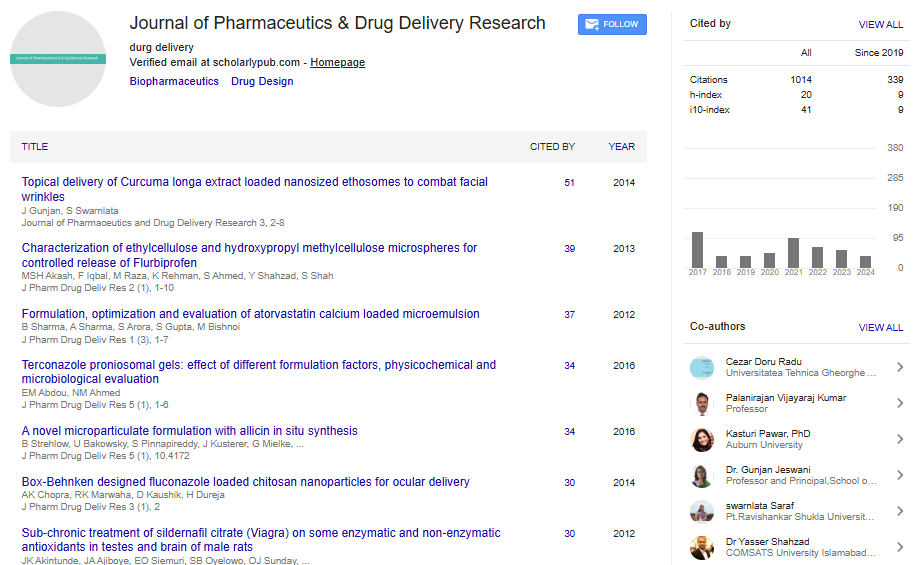Copper II ions detection via localized surface plasmon resonance
Seongjae Jo, Yoochan Hong, Joohyung Park, Woong Kim, Jaemoon Yang and Jinsung park
Korea University, Republic of Korea
Yonsei University, Republic of Korea
: J Pharm Drug Deliv Res
Abstract
As the modern technology has developed, the problem to toxicity of nano-scale materials continues to rise, so it has emerged as an important research project to detect the toxic agents. In particular, according to a recent study, small amounts of copper ions can increase the growth rate of the tumor, so it is important to detect a low concentration of copper ions. A conventional method for detecting ions is by using Inductively Coupled Plasma (ICP) that is expensive and has a hassle things like preprocess of the samples and stabilization of the plasma which is necessary. However, the use of Localized Surface Plasmon Resonance (LSPR) is one of the techniques using the optics which can easily and quickly detect materials on the substrate in real time. The substrate and chelator, antibodies, aptamers or ligands conjugated, can bind the desired materials like ions, proteins, even enzymes and genes. In this study, we made nanoplasmonic substrates using gold nanorods and D-Penicillamine (DPA). D-Penicillamine (DPA) is easy to conjugate with gold due to thiol group. But it is a chelator of the copper, so the DPA conjugated to the substrate is separated from the substrate and bonded to the copper II ions. Copper ion could be detected up to 100 picomolar (pM) concentration by using the nanoplasmonic substrate. It shows a unique selectivity for copper II ions. And we were able to detect copper in human blood-like environment. Based on this study, not only copper II ions but also other ions can be detected by making the substrate that can be more quickly and easily monitored for ions.
Biography
Seongjae Jo studied Control and Measurement Theory at the Department of Control and Instrumentation Engineering at Korea University. Among various subjects, he was interested in sensors and went to graduate school to study Nano and Biosensors. He is currently pursuing his 5th semester of Master’s and Doctor Integrated course at graduate school. He is studying on sensing methods using optics such as absorbance, Raman scattering, and fluorescence, and he is also studying the synthesis of gold nanoparticles for optical applications.
Email: nabiosjsj@gmail.com
 Spanish
Spanish  Chinese
Chinese  Russian
Russian  German
German  French
French  Japanese
Japanese  Portuguese
Portuguese  Hindi
Hindi 
